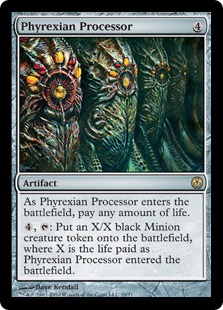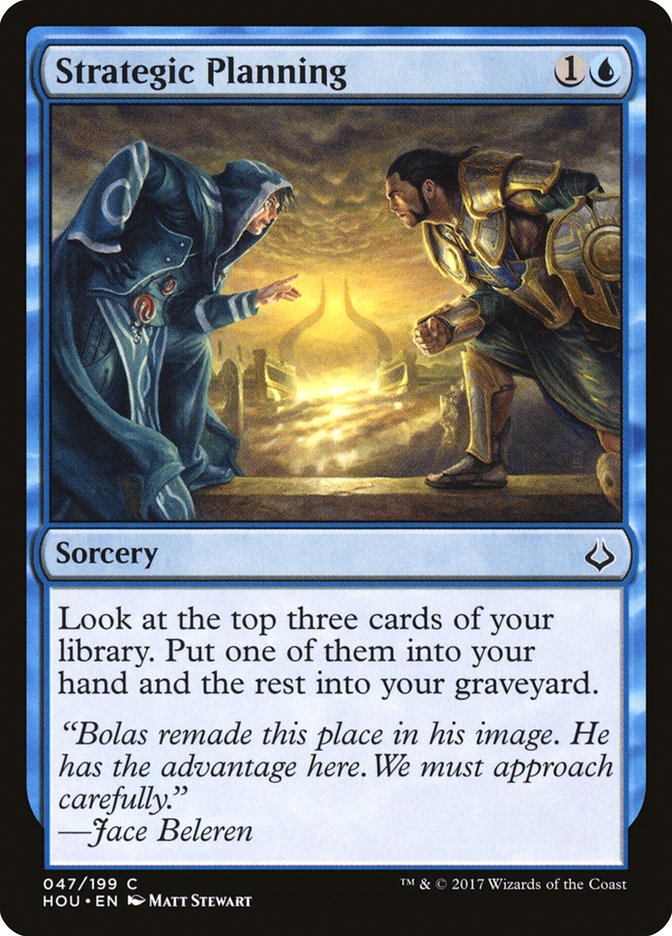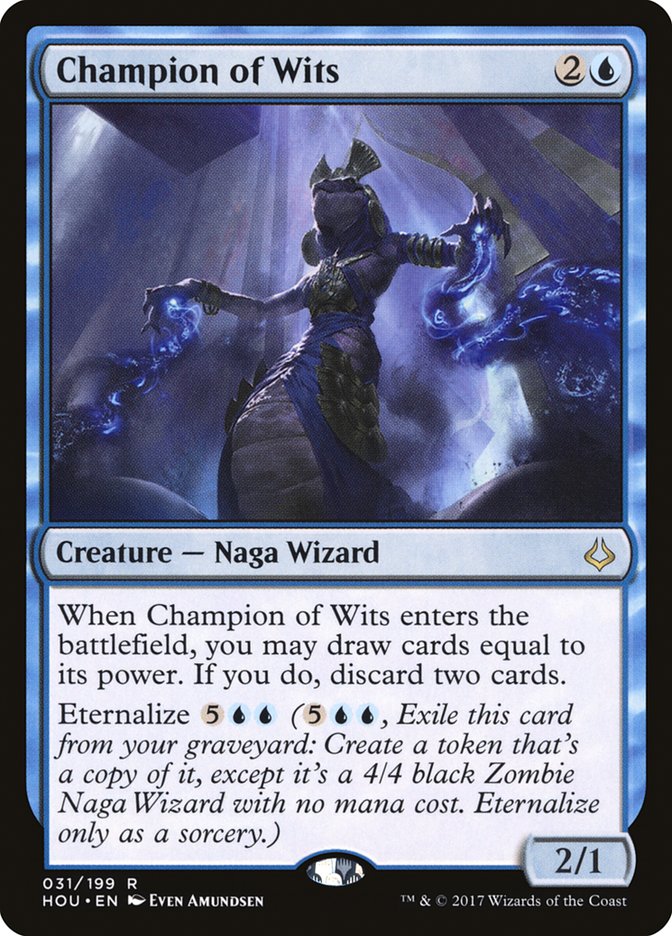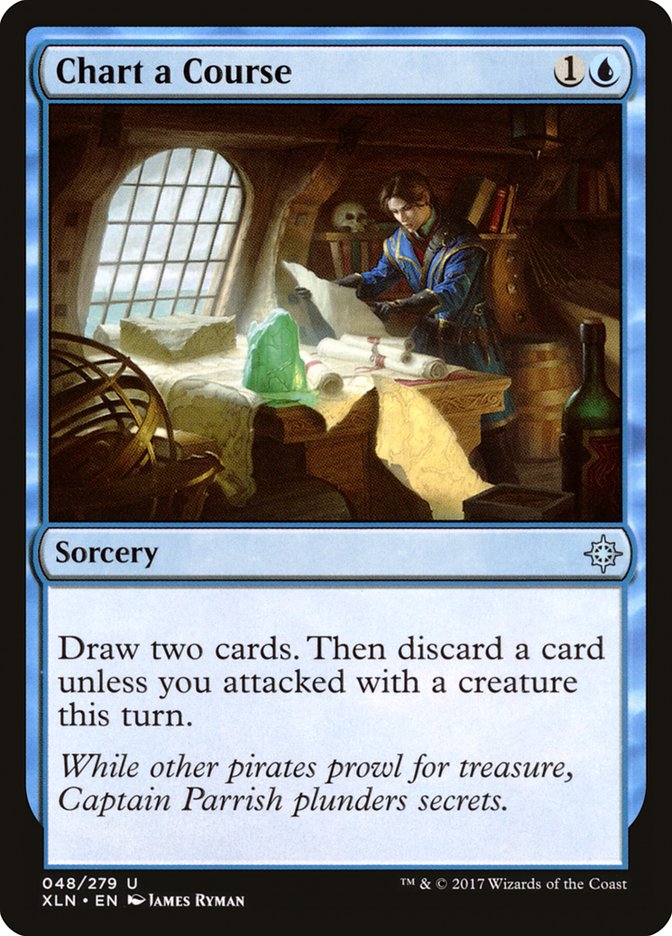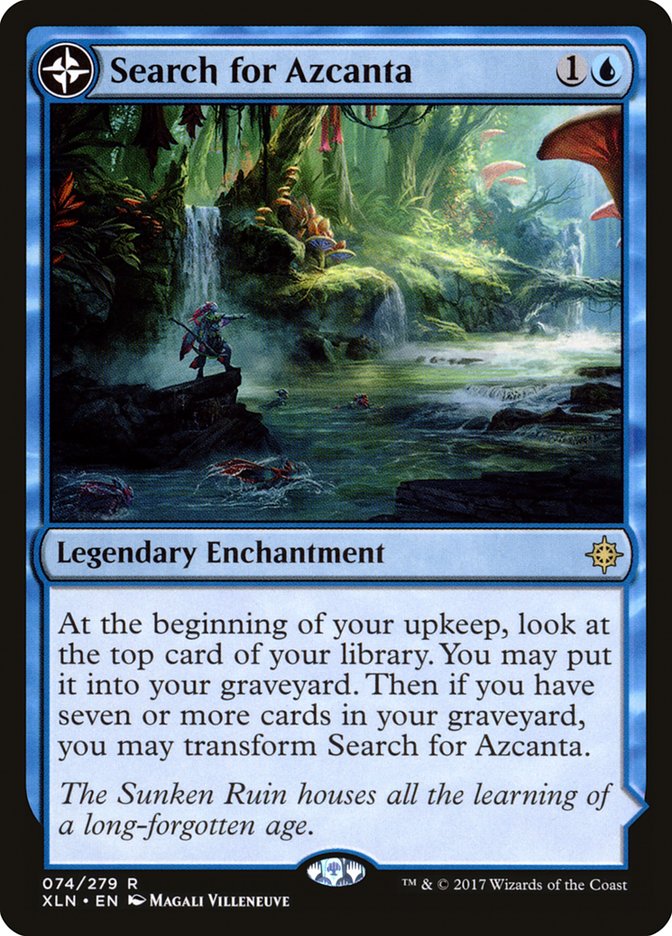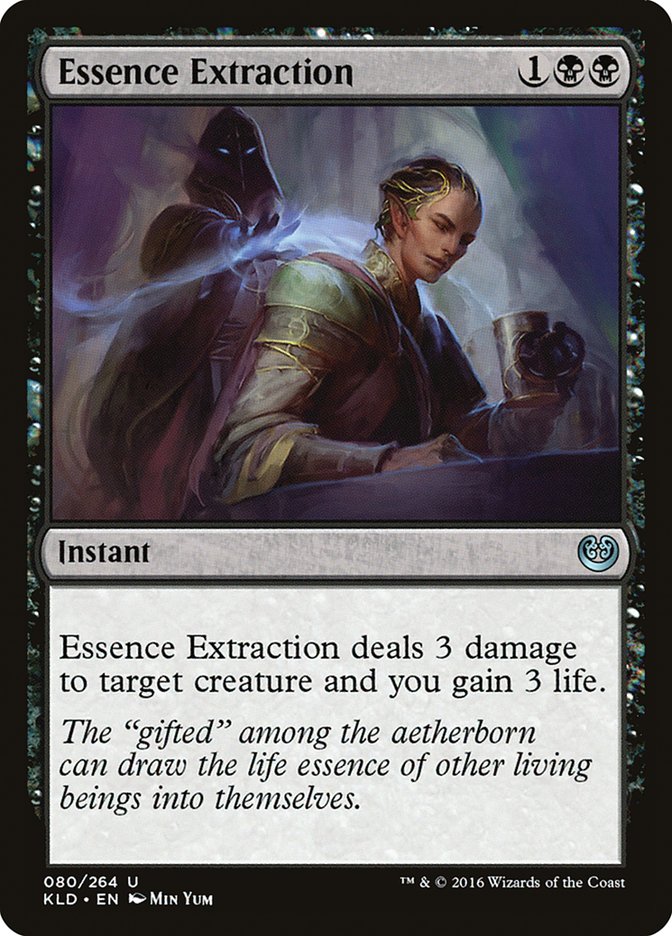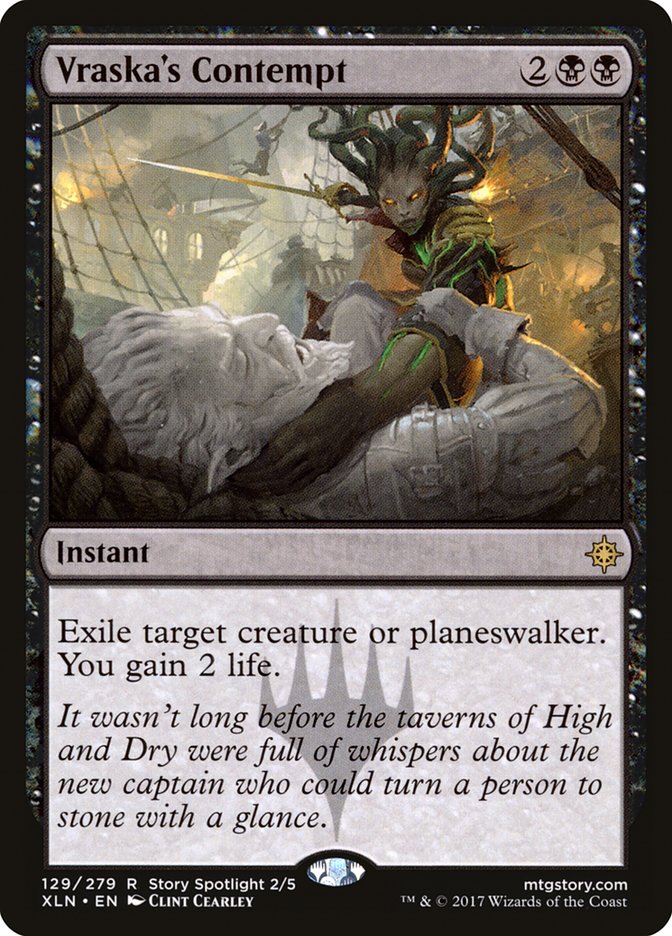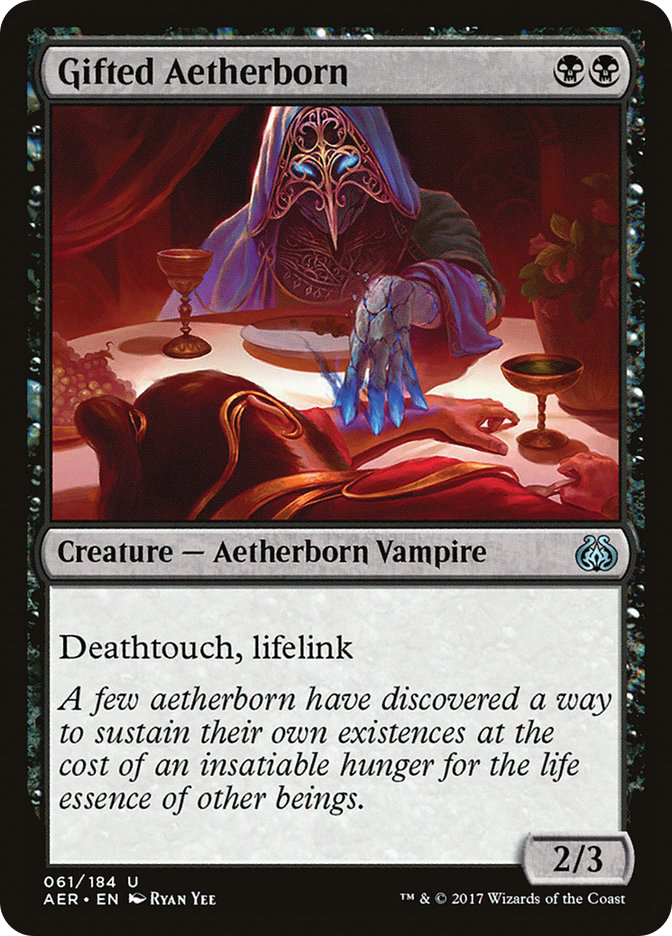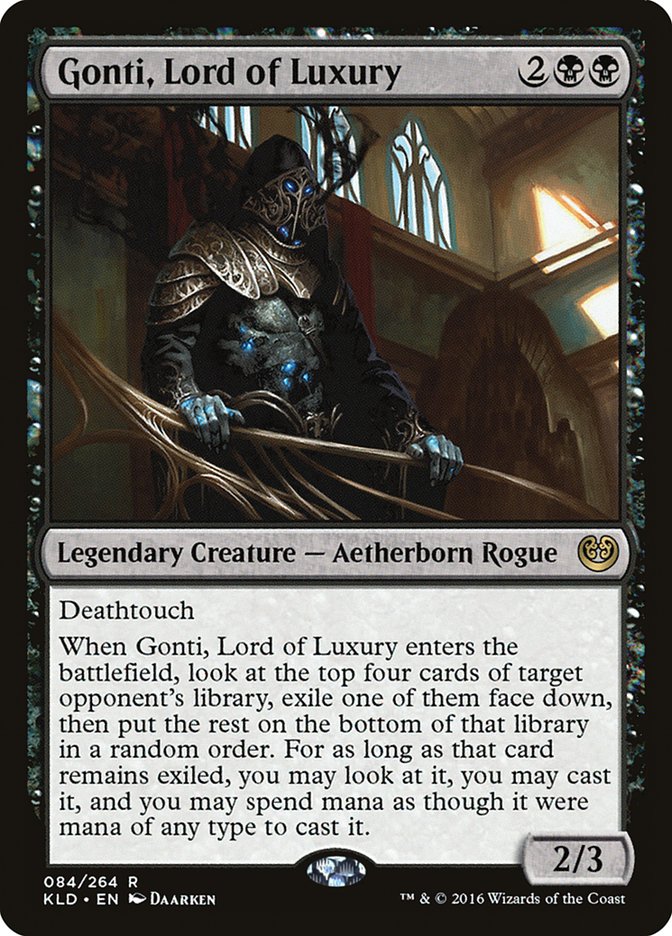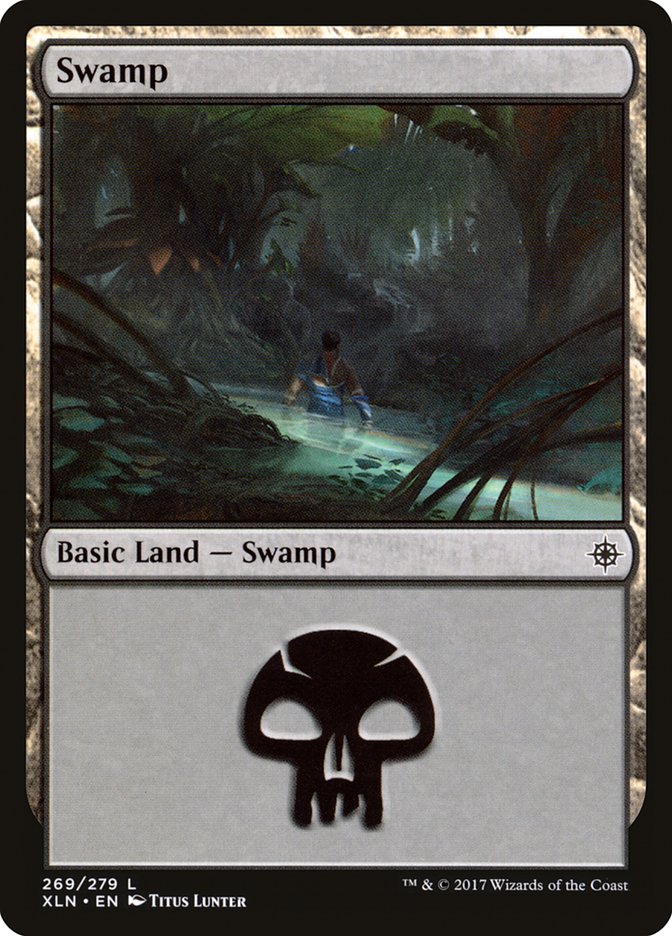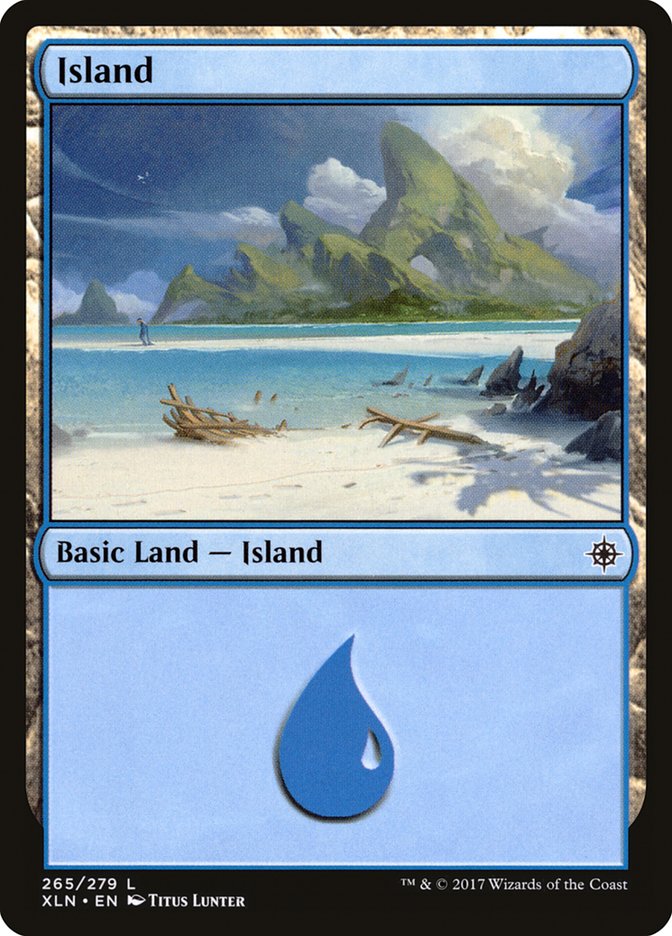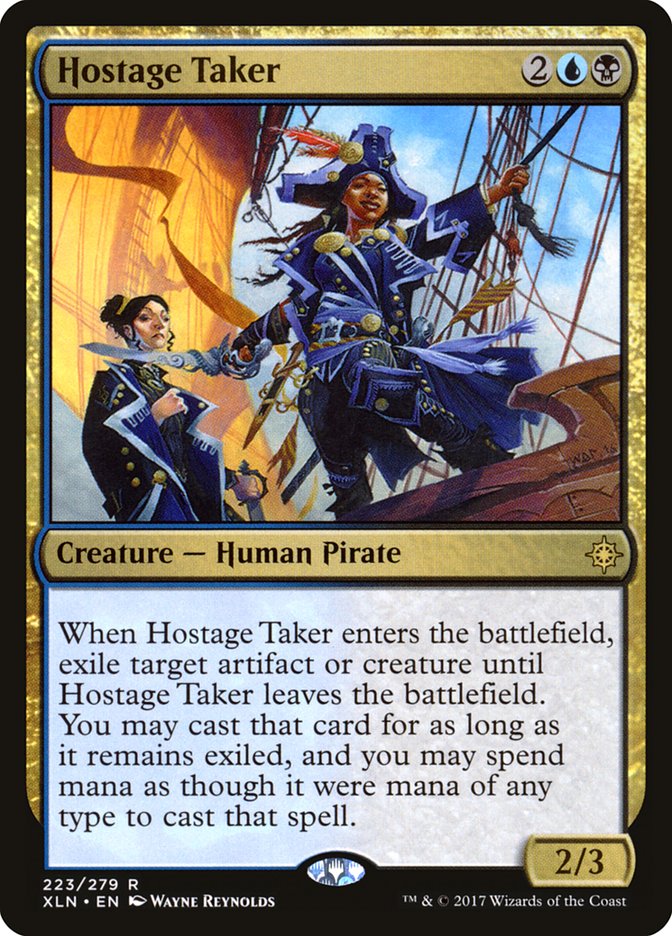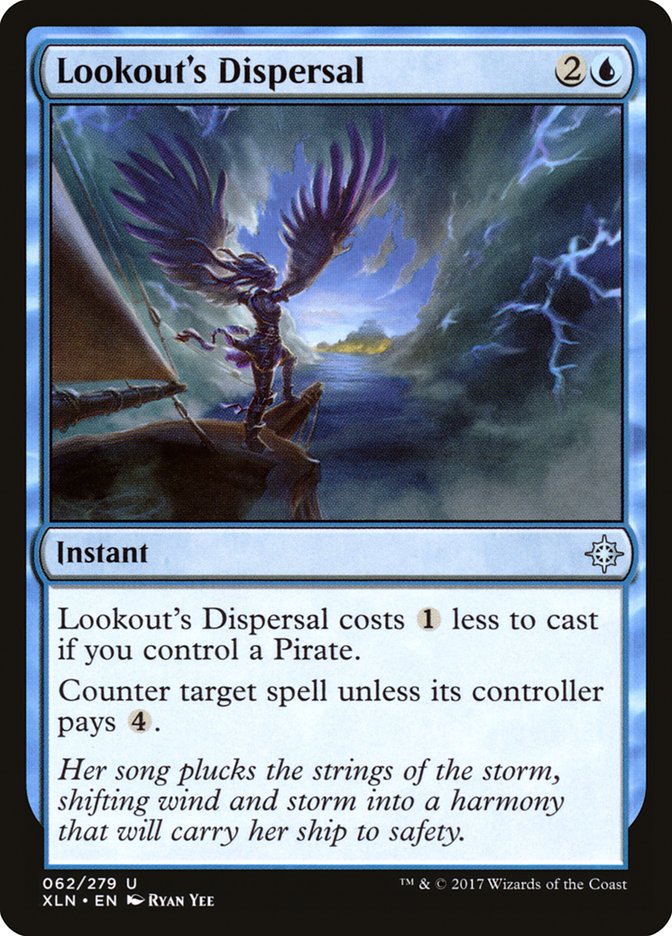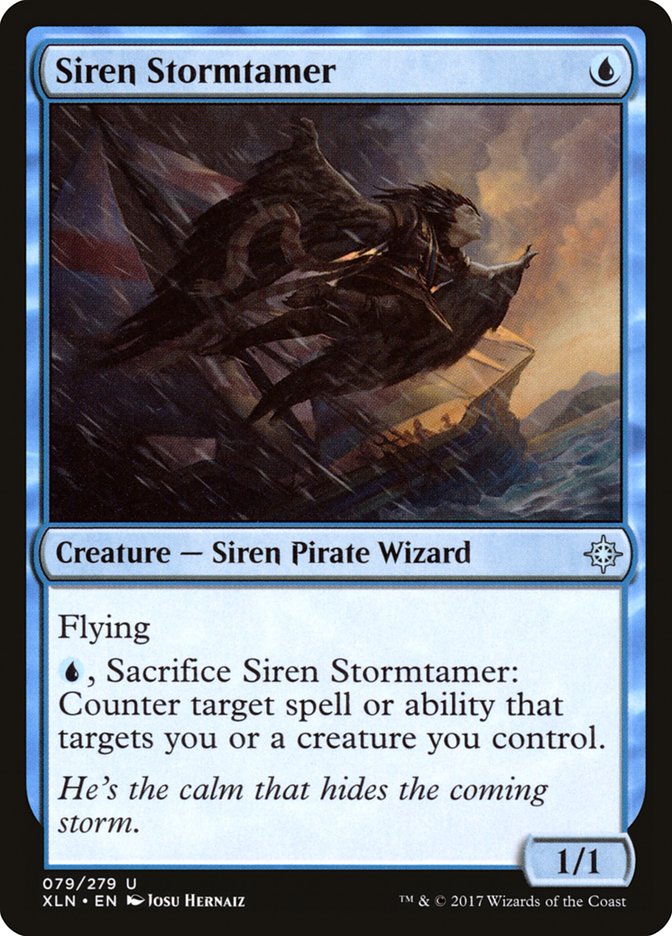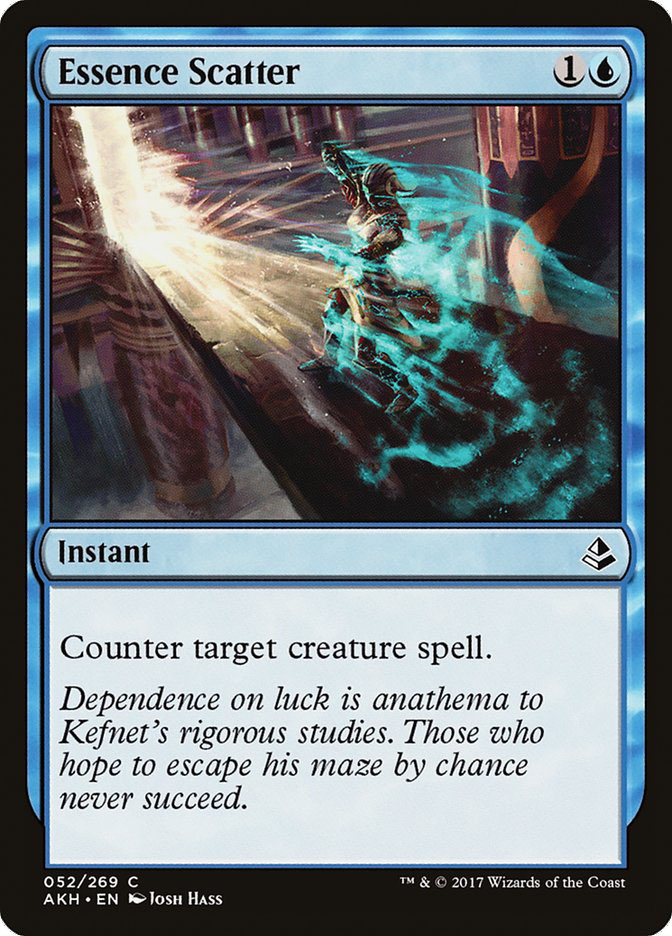Monday, October 2nd
As I write this, I’m flying from Denver to Boston to compete in the Magic World Championship. My testing process for large tournaments, namely Pro Tours and those that involve new formats, has been a constant struggle for me over the course of my career. It’s been the single most important thing for me to fix and I’ve been working tirelessly to improve it.
Oddly enough, the World Championship is the tournament I’ve felt the most prepared for in a very long time, and it’s still a week away.
That said, while I’m happy with my preparation, my play has been lackluster as of late, so that’s mainly what I’m worried about at this point. If I do poorly, that will almost certainly be the result of it.
Anyway, I was in Denver for a week staying at Josh Utter-Leyton’s (aka Wrapter’s) place along with Martin Juza and Sam Black. Between the four of us, we’re probably the best-rounded group working together for the World Championship, so I like our chances, even if I don’t necessarily think I’ll do particularly well.
We started by drafting a ton while waiting for the Magic Online bots to stock up on Standard singles, but soon I was hopping in the Standard Leagues. My process is now more refined, and it goes something like this:
1) Identify what the best/most powerful strategies are and why.
2) Identify things that have promise, i.e. the brews.
3) Test brews.
4) Test the good decks.
5) Refine all the decks.
6) Test brews.
7) Identify potential decks I would consider playing and hyper-focus on those decks. Creating sideboard strategies is a huge part of this step because having a great sideboard will yield better results than simply having a good deck.
8) Double-check my work.
9) Pick a deck, test, and tune it.
Phew. I honestly got exhausted just typing out that list and thinking about everything I’ve done so far.
Generally the process ends with Step 9 occurring right before the Pro Tour (or in this case, the World Championship). Instead, I’m kinda there already, which absolutely never happens.
Here’s why:
The point of the whole testing process isn’t to pick a deck and learn it. For a big tournament, that’s dangerous because you might spend a bunch of time refining a deck at the beginning that ends up not being well-positioned in the metagame. Results are coming in from Magic Online and the SCG Tour and what you thought might be a good pick for the metagame ends up being a good choice for two weeks ago.
Things move rapidly, especially post-rotation when people have a ton of new information they need to figure out. In most cases, rotation tends to make a new format entirely. That’s not really the case here, since Ixalan is a relatively tame set and decks like Temur Energy and Ramunap Red are powerhouses that didn’t lose any important pieces.
This metagame is moving slowly and will probably continue to do so, only because there’s not much you can do; Energy and Ramunap Red are that good.
Still, we’ve seen some small shifts with Winding Constrictor returning to form, and that will likely cause some shake-ups on its own. At the World Championship, I wouldn’t be surprised if some control deck that Shouta Yasooka or Eric Froehlich comes up with ends up being a big player.
The issues with my processes have been numerous, and slowly but surely I’m cutting out my bad habits. What ultimately matters is what is true, not what I wish were true. We have to be willing to kill our darlings and constantly be challenging our own beliefs, especially when presented with new information.
This process led me to B/U Reanimator, although I may not play it. Part of it has to do with the anxiety from playing a “new” deck at the biggest tournament against the best players, not necessarily because the deck might not be good (it is), but because I could entirely misread the metagame.
Sam Black, in trying to justify him playing a “Sam” deck, asked me where I thought I would get my edge in this tournament. It’s a fair question, and while part of my edge comes from Limited, the bigger part comes from having better plans than my opponents, and this deck has that.
For that reason, I won’t be posting any sideboarding guides at this time, but those can come later (maybe in the comments section after the World Championship is over). I could conceivably see myself playing the deck, regardless of whatever concerns I have.
The main reason I wouldn’t play it is because my mini-team thinks they have something better, and I mostly agree with them.
My decklist:
Creatures (20)
- 3 Gonti, Lord of Luxury
- 2 Noxious Gearhulk
- 4 Gifted Aetherborn
- 3 The Scarab God
- 4 Champion of Wits
- 4 Kitesail Freebooter
Planeswalkers (3)
Lands (25)
Spells (12)
Sideboard

B/U Reanimator is a velocity-based Rock (midrange) deck capable of generating some incredible swing turns, which help you turn the corner quickly against Temur and Sultai. Against control decks, your plan is less powerful against them, so you have to leverage pressure to make them easier to finish off once you generate a Liliana, Death’s Mastery swing turn. It’s tricky, but post-sideboard, things get much easier.
Your engine is powerful. Maybe it’s being used to hit land drops, find action to use your mana on, cycle through dead Fatal Pushes against control, or deposit a Noxious Gearhulk into the graveyard to be reanimated on Turn 5. Whatever way, filtering and card selection are powerful turns and this deck makes good use of them in a variety of ways.
Search for Azcanta could be something like Strategic Planning, but I don’t like it. If your entire gameplan were to set up reanimating something big on Turn 5, I could see it, but this deck is fine settling in for the long-game, and Search for Azcanta and Champion of Wits are exactly what allow you to do that. I wouldn’t quite count Search for Azcanta as part of the manabase, but the ramping effect you get when it transforms is not to be understated, especially when you have an incredibly powerful play to make once you reach seven mana.
I assumed a four-casting-cost removal spell wouldn’t see much play and I was very wrong. The context of Standard dictates you have something like this in your 75 to deal with things like Hazoret the Fervent and random planeswalkers. The real threat is The Scarab God, and Vraska’s Contempt is one of the few clean answers. Costing four is less of an issue when you’re mostly targeting big things and trading even on mana, plus it gives you some life.
Fatal Push is the all-star and workhorse of the removal suite, so it should be no surprise to see the full amount. There are metagames where you might play fewer than four, but with Longtusk Cub and Bomat Courier around, that time isn’t now.
Essence Extraction is a potential value-add. This deck has a difficult time dealing with Whirler Virtuoso’s horde of Thopters, so having a removal spell that can kill it cleanly or take out a Thopter and give you a turn of reprieve is almost necessary. Realistically, though, it’s part of the sideboard plan against Ramunap Red that could creep into the maindeck.
I was never a huge Gonti, Lord of Luxury fan. It often felt like people played the card too often and sideboarded it in more often than that. Four mana for a random look at a small portion of their deck doesn’t strike me as a powerful effect, especially if the body isn’t relevant. You have no control over whether or not the card you get is going to help accomplish anything.
That said, the format is actually at a point where deathtouch is incredibly useful against things like Bristling Hydra. Most cards you get from Temur are actually useful too!
Gifted Aetherborn is mostly a maindeck hate card for Ramunap Red, but as I mentioned, the deathtouch ability allows it to trade with Bristling Hydra. Having some extra life makes racing easier and might give you time to untap after eternalizing a Champion of Wits. Considering the deck has several double-black cards, the manabase isn’t being stretched very much to play Gifted Aetherborn, if at all.
Running twenty black sources is almost mandatory if you want to cast Gifted Aetherborn on Turn 2 with any sort of regularity. The deck features very few blue cards and they aren’t ones you need to cast early, so you can afford to keep hands without blue mana, assuming you have things to do in the early turns.
Submerged Boneyard makes the cut over something like Evolving Wilds because of the aforementioned Gifted Aetherborns, even though Evolving Wilds would be slightly better with Search for Azcanta.
Ifnir Deadlands could be in the manabase, but with eternalizing Champion of Wits being such a big part of your gameplan, sacrificing lands has a real cost. The lone colorless land, Field of Ruin, is to stop opposing Search for Azcantas from burying you. If that’s not a concern, it could be a Scavenger Grounds or a Hostile Desert (which is actually quite good).
If you want to run more Pirates (like Hostage Taker and Siren Stormtamer) alongside Lookout’s Dispersal, you certainly can.
Hostage Taker, while absent, is one of the best cards from Ixalan and certainly one that could potentially be quite good in this archetype alongside The Scarab God and Liliana, Death’s Majesty. However, the deathtouch theme against Temur and Sultai Energy is too good to pass up.
Against Temur Energy specifically, I haven’t had good experiences with Hostage Taker. Should they get their hostage back, it’s often a disaster for you, since most of their creatures have excellent enters-the-battlefield triggers. This deck isn’t presenting nearly the amount of must-kill threats that Sultai Energy is, nor does it have Blossoming Defense or Siren Stormtamer for protection. Gonti, Lord of Luxury is incredible right now and gives you some much-needed game against control pre-sideboard.
Siren Stormtamer is difficult to cast on Turn 1 when you also have Gifted Aetherborn and several other double-black cards in the deck, but it could be worth it, even as a Turn 3 play. Not that you typically need much help, but reanimating Siren Stormtamer with The Scarab God is one of the best things you can possibly do with either card.
I wouldn’t mind some permission in the sideboard, but none of the two-mana options excite me against a wide field except for Lookout’s Dispersal. There isn’t any reason to go overboard and play the full four copies, but two would be a reasonable number, even with only ten Pirates.
Essence Scatter and Negate are incredibly potent in their respective matchups, but I can’t see maindecking either, at least right now.
***
Pound-for-pound, black seems to have access to the best cards right now. Fatal Push is incredible, at least in the matchups where it has four high-value targets, and Vraska’s Contempt solves basically whatever problem you have with a much-appreciated lifegain bonus tacked on.
Along every part of the curve, black has access to powerful value creatures, each of which we’re taking advantage of. Some of them didn’t even make the cut! The top-end consists of a Liliana, Death’s Majesty engine with Noxious Gearhulk as the big creature of choice, although reanimating a Gonti, Lord of Luxury or The Scarab God isn’t bad at all.
Creatures (23)
- 4 Longtusk Cub
- 4 Bristling Hydra
- 4 Whirler Virtuoso
- 4 Servant of the Conduit
- 4 Rogue Refiner
- 3 Glorybringer
Planeswalkers (1)
Lands (15)
Spells (21)

The best deck is far worse than people give it credit for.
It used to be that Temur Energy put on the pressure while also grinding well into the late-game with Tireless Tracker. Ever since Tireless Tracker (and later Chandra, Torch of Defiance) fell out of favor for Whirler Virtuoso, no one has added that element back into their deck in any significant way. Temur Energy ends up looking like a G/R Monsters deck. It’s got some powerful threats, can kill you quickly, and can kind of grind, but it will mostly run out of gas before any of that stuff happens barring any true resistance.
I don’t predict Temur to be a large portion of the World Championship metagame. If Temur continues to be popular, B/U Reanimator is incredibly solid against it.
Creatures (23)
- 4 Bomat Courier
- 3 Kari Zev, Skyship Raider
- 4 Hazoret the Fervent
- 4 Ahn-Crop Crasher
- 4 Soul-Scar Mage
- 4 Earthshaker Khenra
Planeswalkers (1)
Lands (10)

Even though both builds are dangerous, the best builds of Ramunap Red are creature-heavy. When decks like Temur Energy and Sultai Energy remove your first couple of threats, you have difficulty dealing twenty damage.
This isn’t a Burn deck. You can’t close the game with twenty points of damage from Lightning Strikes and Shocks. Every single damage you deal with creatures is valuable and you need to maximize that by playing more of them. Clearing the way with Shock, Lightning Strike, and Abrade is a good plan, but you must actually clear the way for something.
I would shave some of the low-impact removal spells like Abrade and Shock; maybe cut Chandra, Torch of Defiance altogether; and play some creatures like Rigging Runner and Rampaging Ferocidon.
If B/U Reanimator gets to stem the early beatdown or stick a Gifted Aetherborn, I like its chances. That said, their deck basically does the same thing every time, so the onus is on you to do something that’s great at stopping them. When you’re on the draw, that can be difficult.
Creatures (27)
- 4 Longtusk Cub
- 4 Winding Constrictor
- 2 Rishkar, Peema Renegade
- 4 Glint-Sleeve Siphoner
- 4 Rogue Refiner
- 4 Walking Ballista
- 1 The Scarab God
- 4 Hostage Taker
Lands (16)
Spells (17)
Sideboard

As it turns out, Sultai Energy is one of the better decks in the format, and Team MGG built a very good version of the deck.
When I was playing Sultai Energy, I found the deck to be threat-light and the MGG version of the deck does little to change that. Blossoming Defense is their key card, and if they can protect a Hostage Taker, you will likely lose. Most of the time, B/U Reanimator should be able to fight Blossoming Defense with Kitesail Freebooter and deathtouch creatures.
The green decks are basically the reason to play B/U Reanimator.
Lands (14)
Spells (46)

I would be shocked if a single person played U/W Approach at the World Championship. Control itself should be a reasonable portion of the field. Unfortunately, true control decks are much worse matchups than Approach. They have hard counterspells, including Disallow which can stop eternalize, and a creature-based win condition that is truly scary. In addition to making it difficult to sideboard since you can’t just load up on Negates and Duresses, if they ever get to The Scarab God your Champion of Wits, it’s over.
The most important thing, especially in Game 1, is to get some velocity going and cycle through your dead Fatal Pushes. Pressuring them with Gifted Aetherborn actually matters a lot, since you will typically create a swing turn with Liliana, Death’s Majesty in the mid-game. From there, they’ll be backpedaling but still have the tools to stabilize. Closing the game when you have that slight advantage is doable when they’re at ten, and nearly impossible if they’re still at twenty.
Thankfully the post-sideboard games are much easier
If there are any takeaways from this article, they should be:
1. Search for Azcanta is a busted Magic card.
2. The Scarab God is the best card in Standard and it’s worth building around, not simply as a value-add in your Temur Energy deck.
Wednesday, October 4th
Update: I’m not playing B/U Reanimator. Over the last couple of days, I’ve seen several takes on the archetype that are intriguing, but it’s something I’ll have to figure it out for a future tournament. Maybe it’s good enough for the World Championship, but I’m going with something I think is a little more solid.
No matter what happens, I’m going to be happy. Obviously getting to play in the World Championship at all is an incredible honor, and it wouldn’t make much sense if I weren’t grateful for the opportunity to be here in the first place. That said, I might as well make the most of it while I’m here.
I can beat these people.


